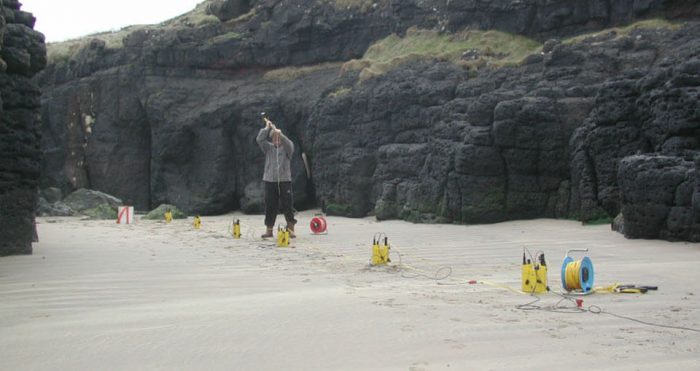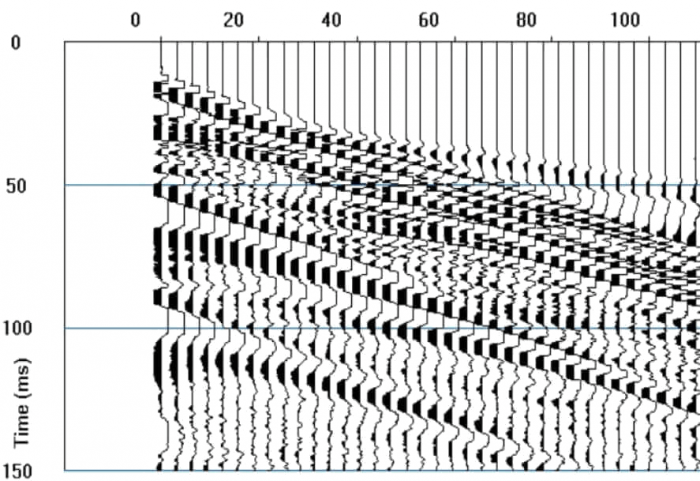Seismic Refraction & Reflection (p-wave)
Seismic methods measure the speed and direction of seismic waves through the earth, using instruments including seismographs and geophones.
This is done by sending an energy pulse into the ground – using a hammer and plate,a drop weight, specialised airguns, or small controlled explosives at surface level.
An array of geophones is used to detect the seismic energy when it ‘bounces back’ and returns to the ground surface.
The design of a survey includes many settings like geophone spacing and locations, energy source type and power and frequency, ‘shot’ locations and choice of recording seismograph.

Seismic Surveying
Seismic refraction uses elastic waves refracted at earth layers and travelling long distances along the earth while seismic reflection utilises reflections that bounce back near-vertically from layer interfaces.
The seismic velocity is an excellent indicator for the compaction or stiffness of overburden materials and for the type and quality of rock. Other parameters linked are density and reflection coefficient and impedance.
Refraction is used mainly in near-surface work to determine the depth to rock, the rippability and excavatability of rock and for showing the thickness and stiffness of the different subsurface layers.
Reflection is used for deeper studies like mineral exploration or famously for oil and gas exploration.
A large range of processing methods and software are available, such as Tomographic Inversion, Forward Modelling and Ray-Tracing.
While the seismic data consists of a large amount of ‘squiggly lines’ the display for end-users is typically a ground model with layers.

